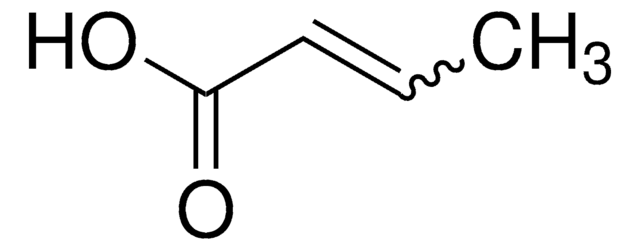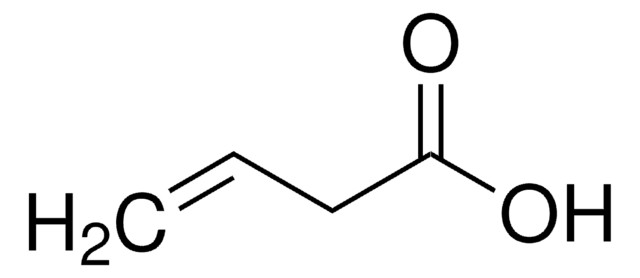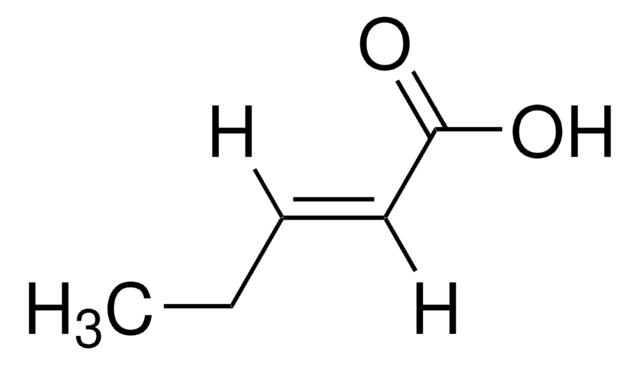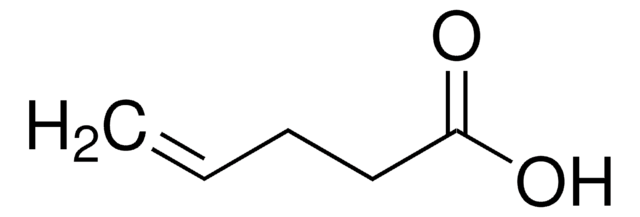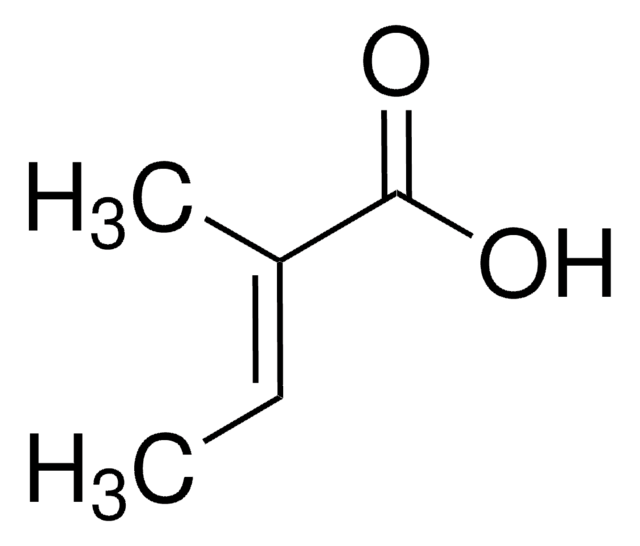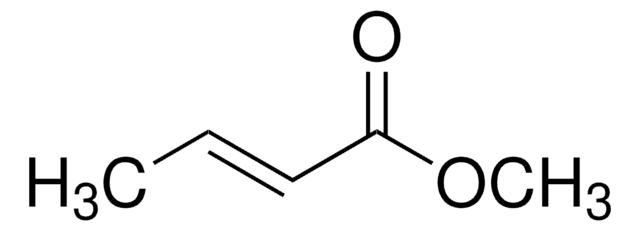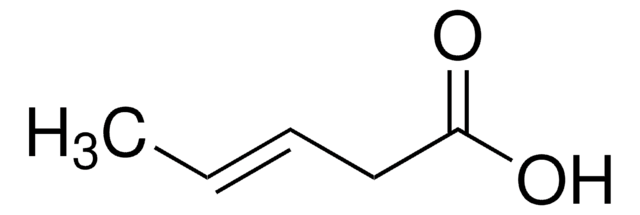113018
Crotonic acid
98%
Synonyme(s) :
trans-2-Butenoic acid
About This Item
Produits recommandés
Densité de vapeur
2.97 (vs air)
Niveau de qualité
Pression de vapeur
0.19 mmHg ( 20 °C)
Essai
98%
Température d'inflammation spontanée
744 °F
Limite d'explosivité
15.1 %, 171 °F
2.2 %, 135 °F
pb
180-181 °C (lit.)
Pf
70-72 °C (lit.)
Solubilité
H2O: soluble
Densité
1.027 g/mL at 25 °C (lit.)
Groupe fonctionnel
carboxylic acid
Chaîne SMILES
[H]\C(C)=C(\[H])C(O)=O
InChI
1S/C4H6O2/c1-2-3-4(5)6/h2-3H,1H3,(H,5,6)/b3-2+
Clé InChI
LDHQCZJRKDOVOX-NSCUHMNNSA-N
Vous recherchez des produits similaires ? Visite Guide de comparaison des produits
Catégories apparentées
Description générale
Application
Notes préparatoires
Mention d'avertissement
Danger
Mentions de danger
Conseils de prudence
Classification des risques
Eye Dam. 1
Code de la classe de stockage
8A - Combustible corrosive hazardous materials
Classe de danger pour l'eau (WGK)
WGK 2
Point d'éclair (°F)
190.4 °F - closed cup
Point d'éclair (°C)
88 °C - closed cup
Équipement de protection individuelle
Eyeshields, Faceshields, Gloves, type P3 (EN 143) respirator cartridges
Faites votre choix parmi les versions les plus récentes :
Certificats d'analyse (COA)
Vous ne trouvez pas la bonne version ?
Si vous avez besoin d'une version particulière, vous pouvez rechercher un certificat spécifique par le numéro de lot.
Déjà en possession de ce produit ?
Retrouvez la documentation relative aux produits que vous avez récemment achetés dans la Bibliothèque de documents.
Les clients ont également consulté
Global Trade Item Number
| Référence | GTIN |
|---|---|
| 113018-25G | |
| 113018-25KG | |
| 113018-3KG | 4061832489148 |
| 113018-500G | 4061838700759 |
Notre équipe de scientifiques dispose d'une expérience dans tous les secteurs de la recherche, notamment en sciences de la vie, science des matériaux, synthèse chimique, chromatographie, analyse et dans de nombreux autres domaines..
Contacter notre Service technique